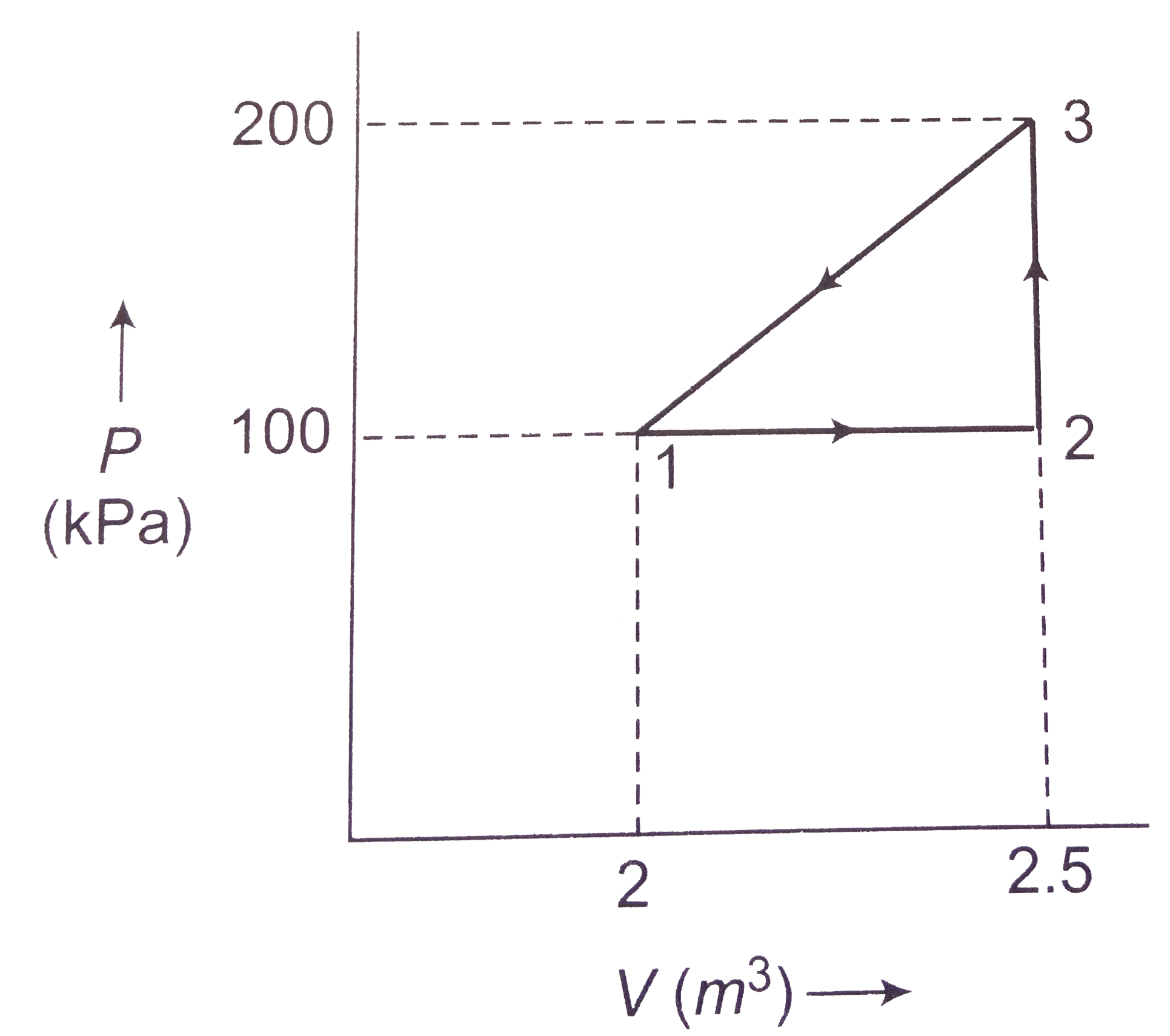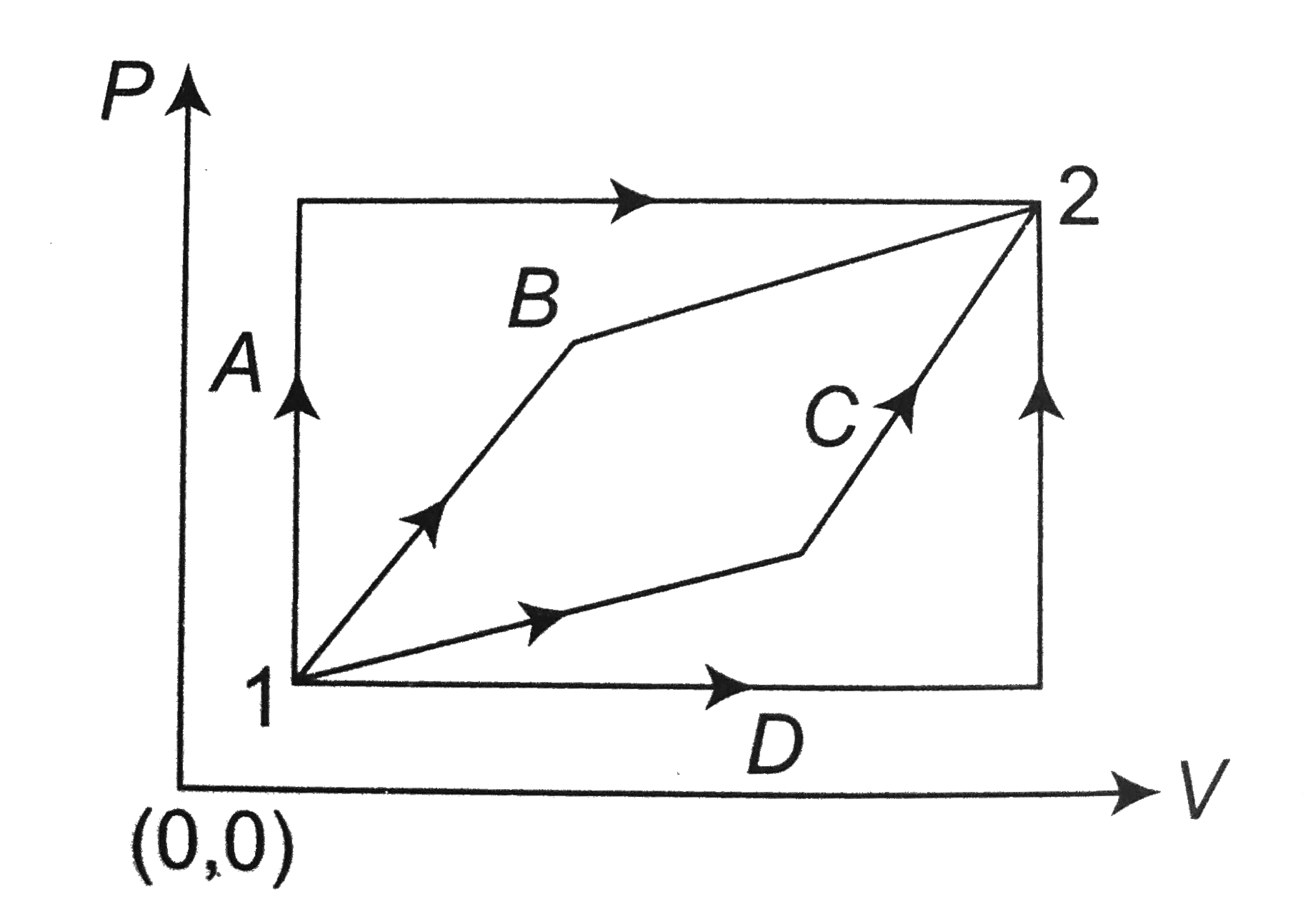A system is changed from state A to state B by one path and from B to A by another path. If ΔE1 and ΔE2 are the corresponding changes in internal energy, then
E1+E2=−ve
E1+E2=+ve
E1+E2=0
None of these
The correct Answer is:C
ΔE=0 for a cyclic process.
Topper's Solved these Questions
- THERMODYNAMICS AND THERMOCHEMISTRY BOOK - ERRORLESS CHAPTER - THERMODYNAMICS AND THERMOCHEMISTRY EXERCISE - ORDINARY THINKING (Objective Questions) Bond energy
15 Videos
- THERMODYNAMICS AND THERMOCHEMISTRY BOOK - ERRORLESS CHAPTER - THERMODYNAMICS AND THERMOCHEMISTRY EXERCISE - ORDINARY THINKING (Objective Questions) Free energy and Work function
57 Videos
- THERMODYNAMICS AND THERMOCHEMISTRY BOOK - ERRORLESS CHAPTER - THERMODYNAMICS AND THERMOCHEMISTRY EXERCISE - ORDINARY THINKING (Objective Questions) First law of thermodynamics and Hess law
100 Videos
- SOME BASIC CONCEPTS OF CHEMISTRYBOOK - ERRORLESS CHAPTER - SOME BASIC CONCEPTS OF CHEMISTRYEXERCISE - JEE Section (Matrix Match type questions)
3 Videos
Similar Questions

In the figure an ideal gas changes is state from state A to state C by two paths ABC and AC.
(a) Find the path along which the work done is least.
(b) The internal energy of the gas at A is 10 J and the amount of heat supplied to change its state to C through the path AC is 200 J. Calculate the internal energy at C.
(c) The internal energy of the gas at state B is 20 J. Fid the amount of the heat supplied to gas to go from A to B.
View SolutionWhen a system goes from state A to state B, it is supplied with 400 J of heat and it does 100 J of work.
(a) For this transition, what is the system's change in internal energy?
(b) If the system moves from B to A, what is the change in internal energy?
(c) If in moving from A to B along a different path in which W′AB=400J of work is done on the system, how much heat does it absorb?
View Solution
Knowledge Check
In a change from state A to state B
Aq depends only on the initial and final stateBw depends only on the initial and final stateCΔE depends only on the initial and final stateDΔE depends upon the path adopted by A to change into B.In a change from state A to state B
A"q" depends only on the initial and final state.BW depends only on the initial and final state.CΔE depends only on the initial and final state,DΔE depends upon the path adopted by "A" to change into "B"A system is changed from state A to state B by one path and from B to A by another path. If ΔE1 and ΔE2 are the corresponding changes in internal energy, then
AE1+E2=−veBE1+E2=+veCE1+E2=0DNone of these
Let ΔU1 and ΔU2 be the changes in internal energy of an ideal gas in the processes A and B then
View SolutionIf a system undergoes an adiabatic change from state 1 to state 2, the work done by the gas is:
View SolutionAn ideal gas is taken from state 1 to state 2 through optional path A,B,CandD as shown in the PV diagram. Let Q,WandU represent the heat supplied, work done and change in internal energy of the gas respectively.
Then,

View SolutionIf ΔH is the change in enthalpy and ΔE the change in internal energy for a gaseous reaction then
View SolutionLet ΔU1andΔU2 be the changes in energy of the system in the process A and B then.

View Solution
